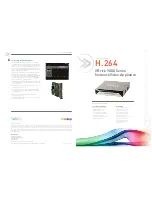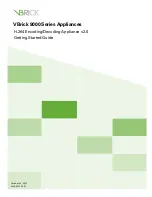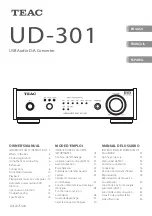
Using Timers to Measure Time
8-9
Timers
So far, only four of the eight bits have been defined. That is because the other
four bits of the SFR do not have anything to do with timers—they have to do
with interrupts and they will be discussed in Chapter 10, Interrupts.
Table 8−4 contains the bit address column because this SFR is bit-address-
able. That means in order to set bit TF1, which is the highest bit of TCON, you
execute the command:
MOV TCON, #80h
However, because this SFR is bit-addressable, you can execute the command:
SETB TF1
This has the benefit of setting the high bit of TCON without changing the value
of any of the other bits of the SFR. Usually, when starting or stopping a timer,
the other values in TCON should not be modified, so take advantage of the fact
that the SFR is bit-addressable.
8.3.5
Initializing a Timer
After discussing the timer-related SFRs, it is time to write code that initializes
the timer and starts it running. As shown previously, the timer mode should be
decided upon. In this case, a 16-bit timer that runs continuously will be used;
that is to say, it is not dependent on any external pins.
We must first initialize the TMOD SFR. When working with Timer 0, the low four
bits of TMOD will be used. The first two bits, GATE0 and CT0 are both 0, be-
cause the timer needs to be independent of the external pins. 16-bit mode is
timer mode 1, so T0M1 must be cleared and T0M0 must be set. Effectively, bit
0 of TMOD is the only bit that should be turned on. Therefore, to initialize the
timer, execute the instruction:
MOV TMOD,#01h
Timer 0 is now in 16-bit timer mode, however, the timer is not running. To start
the timer running, set the TR0 bit by executing the instruction:
SETB TR0
Upon executing these two instructions, Timer 0 will immediately begin count-
ing, being incremented once every instruction cycle (every 12 crystal pulses).
8.3.6
Reading the Timer
There are two common ways of reading the value of a 16-bit timer; which one
is used depends on the specific application. The actual value of the timer may
be read as a 16−bit number, or the timer may be detected when overflowed.
8.3.6.1
Reading the Value of a Timer
If the timer is in 8-bit mode—that is, either 8-bit auto-reload mode, or in split-
timer mode—reading the value of the timer is simple. Just read the 1-byte val-
ue of the timer and that is it.
Содержание MSC1210
Страница 1: ... December 2002 User s Guide SBAU077 ...
Страница 149: ...Digital Filter 12 13 Analog to Digital Converter Figure 12 5 Filter Frequency Responses ...
Страница 162: ...12 26 ...
Страница 234: ...Timers 17 6 Figure 17 4 Timer Counter 1 Mode 1 Figure 17 5 Interrupt System ...
Страница 273: ...Serial Port I O 17 45 Keil Simulator Figure 17 19 Clock Control Peripheral Figure 17 20 USART0 Preipheral ...
Страница 282: ...C 4 ...
















































